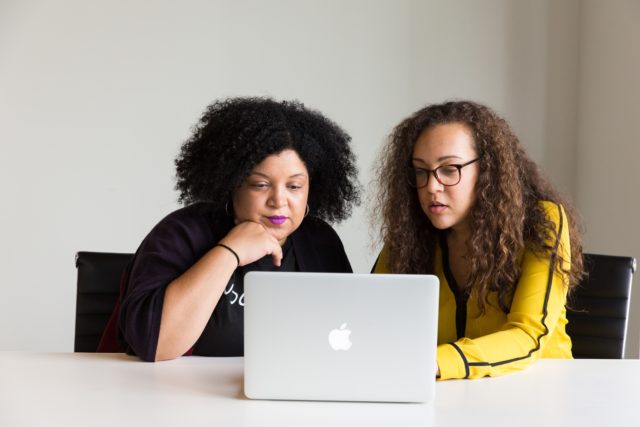Over the last decade, the world has witnessed a significant rise in various types of conflict. The result has been devastation brought about to more than 122 million people who have been forced to flee from their homes because of the ongoing crisis.

Millions of others have lost their lives. More than 80% of all humanitarian needs are driven by conflicts. There’s an urgent need for peacebuilding in these communities if there is any hope of rebuilding a sustainable, peaceful future.
This article explores the critical need for community peacebuilding today and Pollack Peacebuilding Systems’ approach to conflict transformation.
The Importance of Community Peacebuilding Today
Community peacebuilding is critical in today’s society for good reason. Here are some of the various reasons defining the need for community peacebuilding.
Social Cohesion and Trust
The existence of conflict in communities has a direct effect on social cohesion and trust. These conflicts destroy the social fabric and cause widespread trauma. Community peacebuilding efforts are the only promising way to rebuild social cohesion and restore trust among community members.
Often, peacebuilding includes strategies that help communities process and heal from trauma, without which conflicts could easily start again. A critical part of this process is encouraging the qualities of a peaceful person in the community, such as patience, empathy, and respect, so that members learn healthier ways of coexistence.
In this way, peacebuilding shows why communities must break inter-generational cycles of violence and embrace new patterns of trust and cooperation.
Peacebuilding Reduces the Cost of War
The United Nations in 2023 estimated that more than 360 million people worldwide needed humanitarian aid. The numbers increased by about 30% from the numbers in 2022, an indication that there are more conflicts now than ever before. These conflicts have caused a record number of fatalities, causing unfathomable suffering to so many people.
In addition to property loss, there is the human cost of conflict that is the most devastating. At the same time, the economic cost of conflict keeps rising, costing the world about US$20 trillion in 2023.
These amounts could be put to better use, but the world is now paying dearly for the lack of peace. Community peacebuilding can drastically reduce the cost of war.
Peacebuilding Promotes Dialogue and Understanding
Community peacebuilding uses the efforts of different groups, such as peace ambassadors and community organizers. These ambassadors encourage and facilitate peace dialogues among factions, ethnic groups, families, and community members.
Such dialogues create increased understanding and respect, helping to bridge divisions and resolve contentious issues. When communities and families participate in these conversations, they build stronger relationships and lay the groundwork for lasting peace.
Preventing and Resolving Conflicts
Community peacebuilding is one sure way to prevent and resolve conflicts. Community organizers can prevent conflicts from occurring in the first place, making them significantly instrumental in preventing and resolving conflicts before they escalate into violence. When community members can resolve their differences peacefully, there will be no conflicts.
Mediation, negotiation, and reconciliation strategies are critical in allowing opposing parties to find a common ground, and they can work toward a mutually beneficial solution. Ultimately, conflicts become less likely, and communities can continue to exist in peace.
Pollack Peacebuilding Systems’ Approach to Conflict Resolution
Pollack Peacebuilding Systems’ approach to conflict transformation centers on services designed to deliver final solutions to specific, solvable conflicts. Our approach to conflict is effective because it incorporates strategies tailored to each situation.
Here are some of the strategies we use for conflict resolution:
Conflict Coaching
We believe in the effectiveness of conflict coaching, which is an approach that enhances communication skills among community members. Community organizers who are struggling to understand their members’ dynamics can benefit from conflict coaching to understand different conflict styles and expand their emotional awareness.
Local communities can then understand how to navigate conflict more effectively, and they can build healthy relationships with everyone.
Conflict Resolution Training
Pollack Peacebuilding Systems also uses training as an effective approach to conflict resolution. Training exists in response to the understanding that conflicts occur differently and that there is a need for a unique approach to each conflict.
At the end of the training, communities will have enough tools to achieve peaceful solutions whenever there are differences.
Community Training
Communities can easily experience violent conflicts because of ineffective communication. Through years of experience, Pollack Peacebuilding Systems has determined that effective communication is the key to resolving and preventing conflicts.
The approach recognizes that nonverbal communication training can help community organizers to communicate effectively during meetings and thereby can help community members to find ways to maintain sustainable peace.
Peacemaking Programs
Our peacemaking programs also define our unique approach to conflict resolution, especially when it involves conflicts between community members. These programs are designed to rebuild trust and reestablish healthy relationship dynamics.
For instance, two community members who get into a dispute can receive guidance on how to reach understanding and reconciliation. Our programs can transform hostile environments into ones defined by cooperation and respect.

De-Escalation Training
We also use de-escalation training as an approach to conflict resolution. De-escalation training is designed to prevent aggressive arguments and help sustain peace in communities. Community members get to gain skills that define escalating situations and how to intervene effectively to promote a peaceful culture.
Step-By-Step Process of Implementing Peacebuilding Strategies in Communities
There are different processes that can be used to implement peace-building strategies in communities. Here is a step-by-step process:
1. Conduct a Conflict Assessment
A conflict assessment is the first step in implementing peacebuilding strategies. In this stage, the goal is to understand the conflict from a historical perspective and then outline some of the underlying causes of the conflict.
The stage also involves identifying key factors, dynamics, and relationships, while encouraging knowledge sharing among stakeholders. Finally, this step includes mapping out all the parties involved in the conflict.
2. Designing Peacebuilding Strategies
The second step is to design peacebuilding strategies, which entails understanding the conflict theoretically. The emphasis in this stage is to ensure that every actionable program is tailored to the needs of community members through active knowledge sharing and collaboration.
The second step also includes detailed plans on how to monitor and evaluate all peacebuilding efforts in chosen communities.
3. Building Local Capacity and Engaging Stakeholders
Peacebuilding in select communities will require the direct efforts of all stakeholders. Therefore, the third step in any peacebuilding effort at the local level should involve a deliberate effort to build the capacity of local stakeholders. These could include community organizers or community-based organizations who have a shared understanding of what peaceful coexistence is all about.
The bottom-up approach ensures that these efforts foster relationships and promote inclusive participation, such as ensuring that women, youth, and other marginalized groups are actively involved in the implementation of these peaceful efforts.
4. Implementing These Interventions
The final step in peacebuilding at the local level is the implementation stage. This stage has several activities, including launching and facilitating dialogue.
Community conversations and dialogue sessions can foster a deeper understanding of why peacebuilding requires both a shared vision and shared values to guide it. The stage also includes direct efforts to develop social contracts, which are just an effort to create commitments and agreements with the community for a more peaceful future.
Hands-on projects, like mental health services and art projects, improve relations between the community and law enforcement.
Benefits of Community Peacebuilding: Improved Relationships, Reduced Conflict, and Enhanced Cooperation
Some of the most obvious benefits of community peacebuilding are improved relationships, reduced conflict, and enhanced cooperation. However, there are several other benefits, including:
- The avoidance of conflict from escalating : Community peacebuilding work prevents the escalation of conflict, which then reduces the cost associated with deadly violence.
- Security and community stability : Peacebuilding work creates security and stability within the community because of improved social cohesion and trust.
- Safeguarding life and property : Conflicts destroy life and property, and peacebuilding helps keep people and property safe.
- Unity and togetherness : Peacebuilding ensures that there is great unity and togetherness among communities.
- Economic development : Peacebuilding reduces the cost of war, leaving enough resources for community development that would be impossible with deadly conflicts.
Case Examples of Peacebuilding Initiatives Without Specific Testimonials
The following community conflict examples highlight how peacebuilding across different regions has transformed divisions into opportunities for dialogue, trust, and lasting cooperation.
Peacebuilding in Mindanao, Philippines
Mindanao is an island in the Philippines that has a long history of conflict. After years of interreligious tensions and political disputes, Mindanao finally achieved sustainable peace.
In partnership with local organizations, the communities in Mindanao addressed their divisions through dialogue, fostered a culture of understanding, and brought positive change.
Community-Led Peace Efforts in Niger
The people of Niger experienced continued insecurity as a result of intercommunal violence and a weak rule of law. The violence displaced entire communities, and peacebuilding between the government, civil society, and local communities helped address the challenges within the communities and saw that women assumed leadership positions. The efforts ended the conflicts and also prevented the occurrence of new conflicts.
Reducing Sectarian Violence in Iraq
Another community conflict example could be seen in Iraq in 2004. The United States Institute of Peace began its role in Iraq to prevent sectarian violence, develop moderate leadership, promote the rule of law, and strengthen civil society. The organization used funded facilitators, who then intervened to reduce escalating sectarian tensions among residents.
Lengthy dialogues and concerted mediation resulted in various parties agreeing to a host of initiatives that eventually reduced the threat of sectarian attacks. There was a notable decrease in sectarian violence.

Why Community Peacebuilding Matters Today
Community peacebuilding is even more critical in the world today, especially following the show of might going on between nations that is leaving widespread destruction in different communities. The peace of the world depends first on the existence of peace in local communities.
Contact us for tailored solutions to conflicts in your community.



